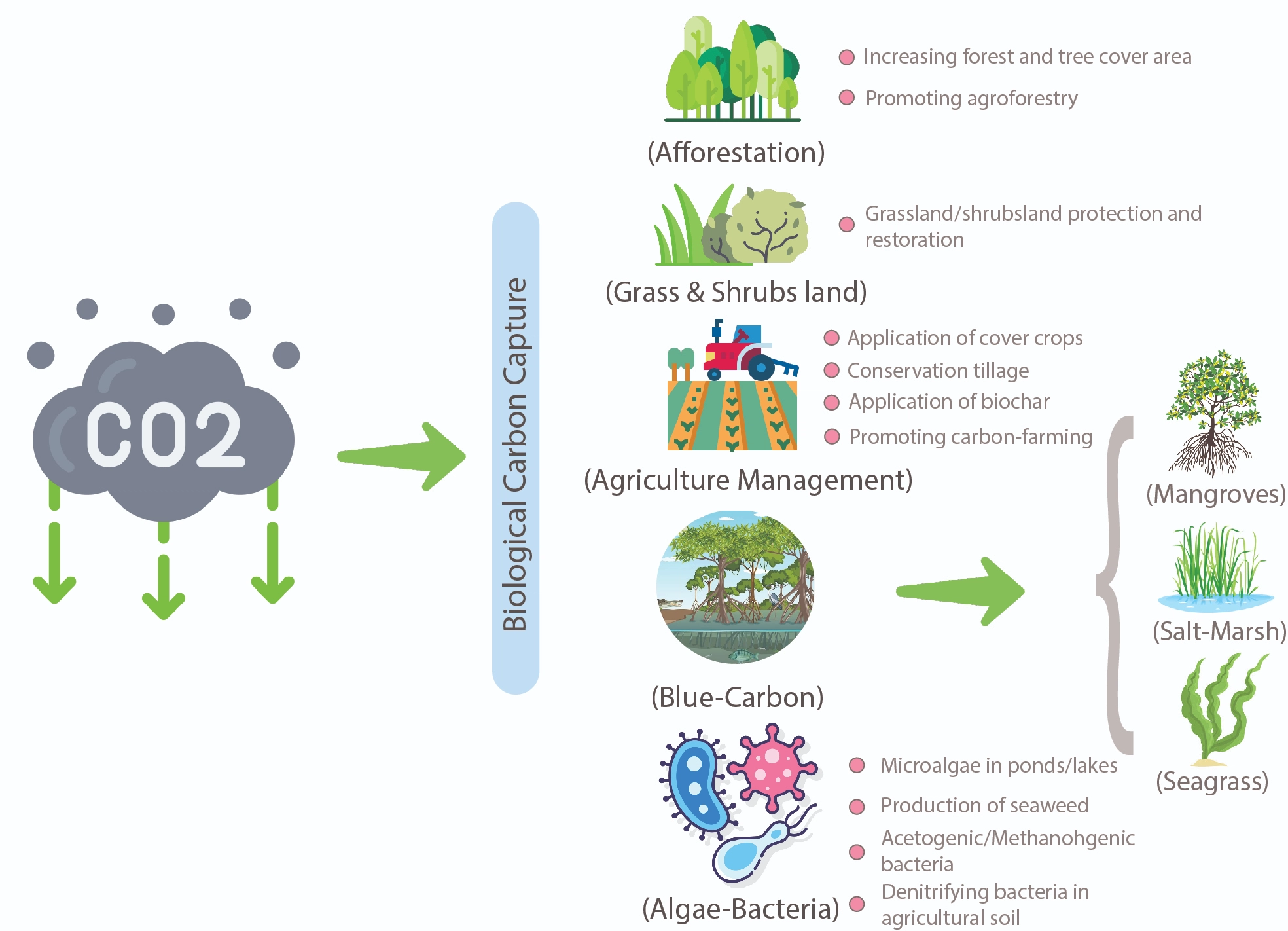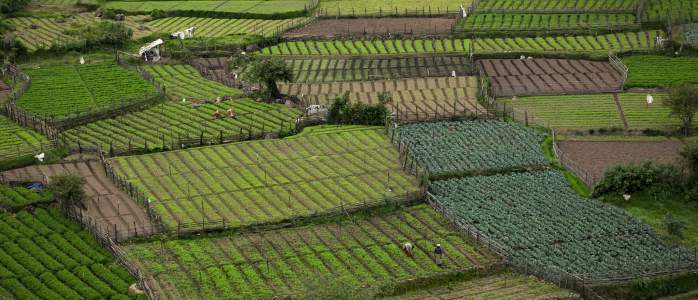



Afforestation is often thought of as the go-to method of carbon sequestration — the process of capturing and storing carbon dioxide (CO2). But to combat climate change and go net-zero on carbon emissions, India will need sequestration methods that go beyond just tree planting.
To illustrate, think of afforestation as the foundation of a sustainable future, much like the cornerstone of a sturdy building. However, just as a building requires more than a strong foundation to stand tall, India's carbon sequestration efforts need additional measures beyond afforestation to combat climate change and reach environmental targets effectively.
India aims to enhance its carbon sequestration efforts by increasing forest and tree cover to 33 per cent right from the time the National Forest Policy, 1988, was released and, under the Paris Agreement, pledged to create an additional carbon sink of 2.5 to 3 billion tonnes by 2030. India also pledged to restore its degraded forests to boost carbon sequestration by 2030 under the Bonn Challenge. It already promotes agroforestry methods like agro-silviculture and agro-silvopastoral systems for sustainable carbon capture.
While afforestation stands as a crucial pillar, it grapples with a few challenges. For instance, careful species selection of trees is crucial because wrong choices lead to poor growth and increase their susceptibility to pests. Maturity age is another factor, as trees take years to reach their carbon capture potential. Agricultural conflicts can also arise when afforestation competes with the land available for food production. Moreover, forest fires in recent years have also challenged successful afforestation efforts. Relying solely on this method, therefore, is not enough. India should explore emerging alternative carbon sequestration methods such as protecting grass and shrubland, promoting blue carbon, utilising algae-bacteria sequestration, and improving agricultural management.

The description of different biological carbon capture methods (Source: Authors’ illustrations and vectors are taken from https://www.flaticon.com/).
Blue carbon sinks, like mangroves, salt marshes, and seagrasses, are effective tools for climate change mitigation, sequestering 2.67 times more carbon than afforestation and over 10 times more than grasslands and agriculture. Besides, seaweeds (macroalgae) not only directly capture carbon from the atmosphere but can also serve as animal feed for livestock, potentially reducing methane emissions from their digestion and indirectly lowering greenhouse gas emissions.
India's mangrove forests covering 4,992 km2, which represents 66 per cent of the country's coastline, are also remarkable carbon sinks, currently storing 702.42 million tonnes of CO2e and having the potential to sequester 748.17 million tons of CO2e by 2030. Furthermore, climate-smart agricultural practices (such as conservation tillage, cover crops, and biochar applications) have proved to be effective strategies for increasing soil organic carbon sequestration and decreasing greenhouse gas emissions. While India took active steps to globally promote blue carbon sequestration through its G20 presidency by proposing initiatives such as creating a comprehensive international framework for blue carbon sequestration and establishing a Blue Carbon Research and Development Centre, it is crucial to acknowledge and address the inherent challenges to effectively implement these alternative carbon sequestration methods at a nationwide scale.
Here's how India can effectively amplify alternative carbon sequestration methods beyond afforestation.
Research funding, technology incubation, and public-private synergy: India should adopt a comprehensive policy approach that considers the well-being of local communities and recognises the social and economic value of these ecosystems, drawing inspiration from successful international initiatives such as Australia's mangrove conservation in the Great Barrier Reef and projects in Africa, such as Zimbabwe's conservation agriculture and Morocco's climate-smart agriculture initiatives. To diversify its carbon capture methods, India should allocate research funding beyond afforestation and focus on innovative technologies such as soil carbon enhancement, blue carbon, and algae-bacteria-related carbon sequestration. Establishing specialised technology centres and promoting public-private partnerships with incentives such as tax breaks and subsidies can attract private-sector investments.
Additionally, India needs to develop detailed technology roadmaps for various carbon capture methods and robust regulatory frameworks to facilitate the adoption of emerging technologies, ensuring they align with global sustainability goals and contribute significantly to environmental and economic well-being.
Long-term monitoring and evaluation: India needs to implement a robust monitoring and evaluation system to track the effectiveness and impact of different carbon capture technologies, regularly assess their contribution to carbon reduction goals and make necessary adjustments. A noteworthy example would be the monitoring and restoration of the mangroves of Sundarbans. The project was initially under the Afforestation, Reforestation, and Restoration (ARR) category, but after the recognition of the importance of the mangroves’ blue carbon sequestration capacity, the project was gradually converted into a successful community-managed voluntary monitoring system funded by the emission reduction credits issued by UNFCC).
Carbon markets and incentives: Establish a carbon market that incentivises local stakeholders to invest in carbon capture and storage methods. It must implement carbon pricing mechanisms that reward organisations for adopting and scaling innovative technologies. A notable example of this approach is the World Bank BioCarbon Fund (WBBCF), which purchased sequestered carbon at a rate of 4 USD per tonne of CO2e, where participating farmers received USD 3.29 per hectare per year, in addition to free training sessions and workshops.
Capacity building, workforce training, and international collaboration: In 2011, western Indian Ocean nations like Tanzania and Mauritius boosted seaweed production through capacity building, training, and international collaboration. This effort increased annual production from 11,000 to 15,088 tonnes by 2012. India should prioritise investing in training programmes for skilled carbon capture system experts, including farmers in advanced seaweed cultivation techniques. This not only enhances production and the local economy but also involves more farmers. Additionally, researching seaweed for livestock feed emission reduction is crucial. India has collaborated with Norway for ocean management, but further partnerships with international organisations and research institutes are vital for sharing carbon capture best practices.
While afforestation remains a cornerstone of carbon sequestration efforts, diversifying our approach is essential for addressing the multifaceted challenges posed by climate change. India's commitment to sustainability and innovation can drive the exploration and implementation of these diverse methods, ultimately leading to a more resilient and greener future.
Joy Rajbanshi is a Programme Associate at the Council on Energy, Environment and Water (CEEW). Send your comments to [email protected].






Add new comment